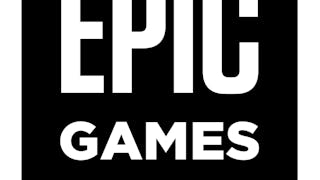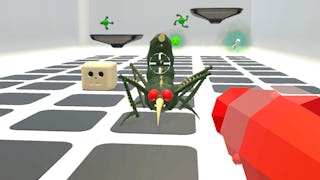Welcome! This course is an introduction to the primary concepts of gaming, and an exploration of how these basic concepts affect the way gamers interact with our games. In this course you will understand what defines a “game” and the mechanics and rules behind different types of games. Through four linked assignments you'll learn ways to create and describe a game concept, and specifically what makes a compelling game. This course focuses on the conceptual underpinnings of games, and all assignments can be completed with a pencil and paper – no previous programming knowledge is required.

Gain next-level skills with Coursera Plus for $199 (regularly $399). Save now.

Introduction to Game Design
This course is part of Game Design: Art and Concepts Specialization

Instructor: Fran Krause
130,441 already enrolled
Included with
(2,911 reviews)
Skills you'll gain
Details to know

Add to your LinkedIn profile
See how employees at top companies are mastering in-demand skills

Build your subject-matter expertise
- Learn new concepts from industry experts
- Gain a foundational understanding of a subject or tool
- Develop job-relevant skills with hands-on projects
- Earn a shareable career certificate

There are 4 modules in this course
This week we start at the beginning: what are the principles of very simple games, like Hangman and tic-tac-toe? How do these games work? Why do people play them? What are the elements that define games and the gaming experience? And finally, what do games have in common with each other, and what sets them apart? In addition to covering the basics and ground rules for this course, we'll conclude this week with a very simple, low-tech assignment: create a game on a single sheet of paper.
What's included
6 videos5 readings1 peer review1 discussion prompt
How does a player learn the mechanics of your game? How do they learn anything about your game? This week we will talk about the rules that define gameplay, and how those rules are communicated to your players. We also discuss the way rules are bent and broken by players.
What's included
6 videos1 peer review
How does narrative drive a player to start playing your game? Or to finish it? This week we'll look at some of the ways you can make your game more compelling with story, and discuss some of the ways story can drive gameplay forward, or enable a player to make their own way through it.
What's included
9 videos1 peer review
What purpose does an enemy serve in a game? What effect does a second player have on two-player games? Can a game work without an adversary or a final goal? We'll address all of those questions in this last week of the class, and work towards finalizing your board game project with characters.
What's included
6 videos1 reading1 peer review
Earn a career certificate
Add this credential to your LinkedIn profile, resume, or CV. Share it on social media and in your performance review.
Instructor

Offered by
Explore more from Music and Art
 Status: Free Trial
Status: Free TrialEpic Games
 Status: Free Trial
Status: Free TrialMichigan State University
 Status: Free Trial
Status: Free TrialMichigan State University
 Status: Free Trial
Status: Free TrialCalifornia Institute of the Arts
Why people choose Coursera for their career




Learner reviews
2,911 reviews
- 5 stars
79.49%
- 4 stars
16.04%
- 3 stars
2.88%
- 2 stars
0.85%
- 1 star
0.72%
Showing 3 of 2911
Reviewed on Apr 12, 2020
I really loved doing this course. Learnt how to make a simple game and make it really interesting! I loved how the easily the instructor was able to teach us and make us curious throughout the course.
Reviewed on Dec 26, 2016
A very basic course to start off the game design career. Great if you want to start right from the ground stage and make your way up! Complex concepts broken down and put ever so simply! Try it out!
Reviewed on Nov 1, 2016
I really enjoyed the course. The assignments helped me think about games in new ways, and I developed several that I will be able to use with my high school language arts students.
Frequently asked questions
To access the course materials, assignments and to earn a Certificate, you will need to purchase the Certificate experience when you enroll in a course. You can try a Free Trial instead, or apply for Financial Aid. The course may offer 'Full Course, No Certificate' instead. This option lets you see all course materials, submit required assessments, and get a final grade. This also means that you will not be able to purchase a Certificate experience.
When you enroll in the course, you get access to all of the courses in the Specialization, and you earn a certificate when you complete the work. Your electronic Certificate will be added to your Accomplishments page - from there, you can print your Certificate or add it to your LinkedIn profile.
Yes. In select learning programs, you can apply for financial aid or a scholarship if you can’t afford the enrollment fee. If fin aid or scholarship is available for your learning program selection, you’ll find a link to apply on the description page.
More questions
Financial aid available,
¹ Some assignments in this course are AI-graded. For these assignments, your data will be used in accordance with Coursera's Privacy Notice.





